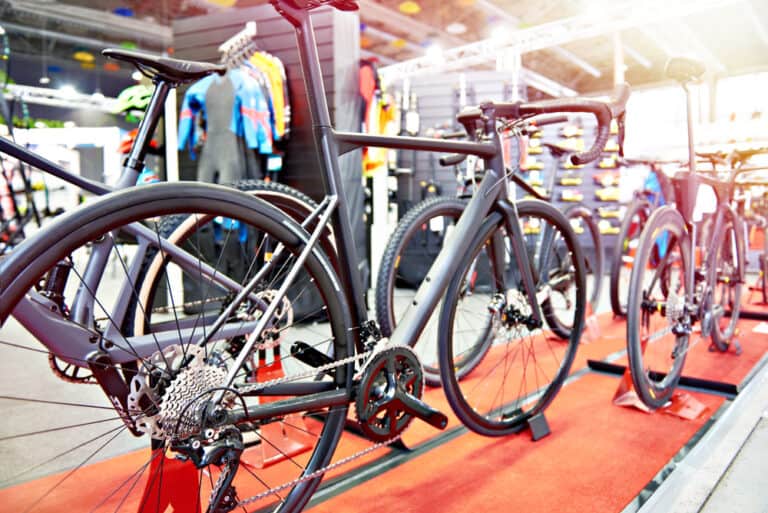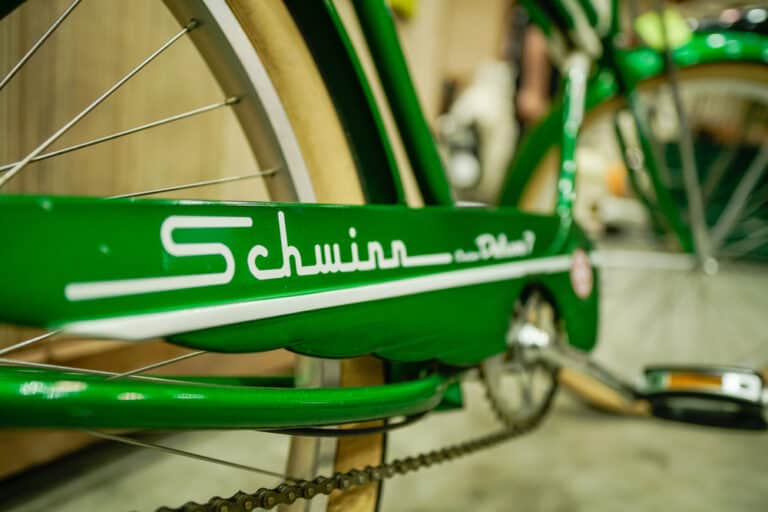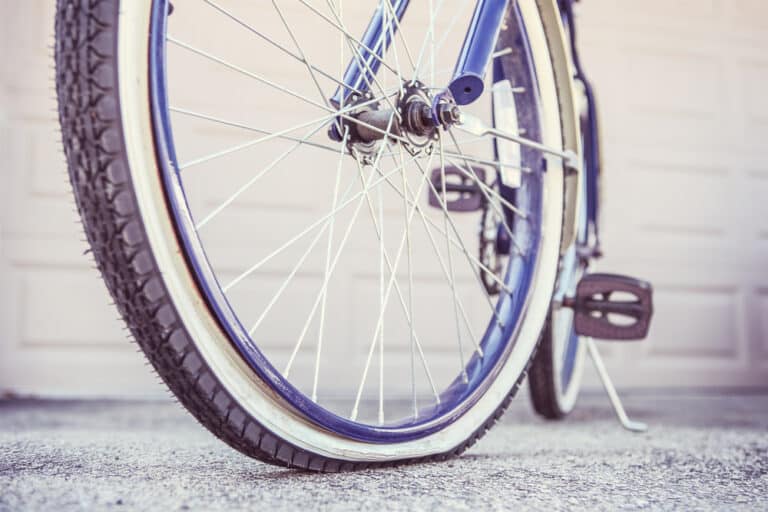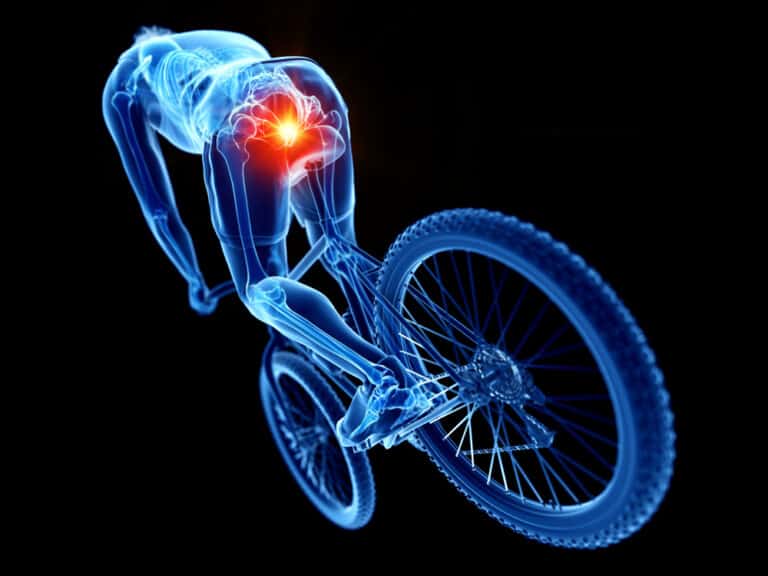Ride A Bike With Or Against Traffic

As avid cyclists, we can sometimes ride on auto-pilot without much thought to the path or direction we take. While out cycling, I caught a glimpse of a bicyclist traveling against the flow of traffic. When asked why, they said it shaved off a few minutes to their destination. However, is it worth it? Should you ride with or against traffic?
It is always better to ride a bike with traffic than against it. Riding with traffic makes it easier for motorists to spot you, adjust their speed and wait for an opportune moment to pass. All states have laws that prohibit riding against traffic, and collisions with motorists leave you at fault.
While it might be more appealing to take the shorter route and cycle against traffic, the dangers are significantly greater than riding with traffic. We’ll explore the risks from the perspective of the cyclist, the motorist, and law enforcement. We’ll also look at a legal scenario where a cyclist collides with a vehicle, to see which party the law would place at fault.
Ride A Bike With Or Against Traffic
When cyclists ride against traffic or against the stream, it’s called salmoning. Traditionally, the phrase swimming against the stream can sometimes be positive, but it is alarmingly dangerous when it comes to cycling.
The fundamental observation about bicycle safety in traffic is that if a driver sees you, they will not hit you. Thus, it wouldn’t make sense to hide purposely from motorists! Those who practice salmoning put themselves at a much higher risk of injury or death, primarily because it makes it much harder for motorists to spot them and react to an impending accident.
For this reason, every single state prohibits cyclists from riding against traffic, and doing so is a violation of the law and may warrant a ticket. Of course, negligent cyclists might also cause a more significant accident by causing a vehicle to perform a pervasive maneuver to avoid the cyclist, potentially hitting another car or even a pedestrian.
Going against traffic doesn’t allow an approaching vehicle to choose when it’s best to pass a cyclist. As such, it creates a life-threatening situation for the cyclist. When the bicycle and automobile travel in the same direction, the driver can reduce their speed and wait for the opportune time to pass the cyclist. Thus, cyclists benefit from the legally required 3 feet or more space to pass safely.
On the other hand, a vehicle traveling head-on toward the cyclist does not have the luxury of making that choice; instead, they have to pass when both meet.
Traffic law is for the benefit of all road users – cyclists and motorists – so it’s essential that everyone follow the same set of rules. If cyclists ignore traffic laws and ride against traffic, it is only a matter of time before they get it – and in a collision between a bike and a car, the bike loses every time!
Why Is It Vital To Cycle With Traffic?
Since a large part of bicycle safety involves making yourself visible, it is wise for cyclists to equip hi-visibility and reflective clothing combined with strobe lights mounted on the bicycle’s front and rear. Additionally, mounting a rear-view mirror on the bike will significantly help to see when and by what margin vehicles pass you.
About half of all car-bike collisions in the USA involve a wrong-way cyclist. In truth, the real danger is not necessarily from cars passing a cyclist correctly, but rather, it involves cyclists at intersections who were traveling against traffic. In this case, motorists will much more frequently look out for pedestrians at walking speed rather than cyclists traveling four times faster than walking pedestrians.
Most cyclists generally follow the rules of the road, and while it will undoubtedly reduce their risk of an accident, it serves an even more important goal of making them aware of motorists.
A study shows that less than 5% of cyclists break traffic laws while riding, compared to 66 percent of motorists. Thus, by sticking to the road rules, cyclists can protect themselves from legal action and have the authorities on their side regarding disputes.
That said, disobeying the law will make you equally as liable as a motorist and likely result in a ticket from an officer. Furthermore, if you find yourself in a vehicle collision while traveling the wrong way on the road, you’ll be guilty of breaking the law, and the fault will be yours.
Most states include bicycles in their vehicle code definition of the word vehicle. In fact, some states like Philadelphia go as far as handing out a DUI for riding a bicycle while intoxicated! It also means that, according to the law, other road users must treat you as a vehicle on the road.
Ensure you ride at least two feet from the curb for cars wanting to pull out, to go into a different lane to pass you. While it may sound counter-productive, it will give you much more room for passing vehicles. When you ride too close to the gutter or the curb, you forfeit your escape route, and drivers will minimize the amount of space they think you need.
The three-feet law is crucial, especially when it comes to parked cars. Riding a couple of feet out causes cars to move over and give you the legally required three feet. It is unlikely that you will notice someone in their vehicle about to open their car door when you travel at a reasonable speed. Furthermore, neither you nor the motorist will be able to react in time to prevent the accident.
In fact, you’ll likely hit the door and fling yourself over the handlebars, or you might swerve to avoid the accident, accidentally swerving into traffic because you didn’t have the time to check if it was safe to swerve in that direction.

How Does Riding With Traffic Help Vehicles?
When cars pull out of driveways or make a right-hand turn at a junction, they usually face in the direction that traffic is already approaching. It’s unusual for them to look both ways, and they don’t anticipate vehicles in the bike lane coming from the wrong direction.
It is wise to ride predictably to maximize your safety. The same reasoning applies to pedestrians looking for oncoming vehicles in their expected lane. Thus, the safest alternative for cyclists is to abide by the law and travel with traffic to reduce confusion for motorists, cyclists, and pedestrians.
When you cycle with traffic and the vehicle behind you does not have sufficient space to pass, the motorist only needs to match your speed until they have a safe opportunity to pass. However, riding against traffic in the same situation leaves the driver with drastically reduced reaction times. They may only have a choice between driving into the cyclist or oncoming traffic.
Thus, if you ride against traffic, any driver in a car pulling out will look away from you, leaving you significantly more vulnerable. Moving with traffic flow makes your travel speed relative for motorists, improving their ability to judge the distance between them and a cyclist.
What Happens Vehicles Hit Cyclists Riding Against Traffic?
In the unfortunate event that a motorist collides with a cyclist riding against traffic, which party is at fault?
Consider a bicycle-car collision in which the bicyclist was riding against traffic, and a driver exiting the drug store parking lot pulled forward and hit the cyclists as they crossed a driveway cutout. Furthermore, imagine the accident happening in Illinois, where a cyclist belongs to the pedestrian category even if they ride a bicycle on the sidewalk.
Would it be fair to say the vehicle was at fault because the law states they should give the right of way to pedestrians?
In reality, the bike was riding three or four times faster than the average person strolling on the sidewalk. Therefore even if the automobile stopped before crossing the sidewalk, they most likely didn’t spot the bicyclist when they looked for pedestrians.
The bicyclist stated that they observed the motorist stop and gaze toward them half a block away, but their gaze did not meet. Furthermore, at the moment of the collision, the driver was not looking in the cyclist’s direction.
The cyclist made a series of bad decisions, increasing their likelihood of an accident with every bad one. On the other hand, the motorist made a reasonable effort to follow the rules of the road and ensure the safety of other road users before exiting the parking lot. As a result, the motorist is the lawful party while the cyclist is at fault.
Riding on the sidewalk against traffic places the rider in a position where cars exiting driveways or crossroads have a significantly reduced probability of seeing them when searching for traffic.
The truth is bicyclists riding against traffic are unlikely to be in any of these locations. Furthermore, because bicycles travel quicker than pedestrians, they cover distance faster, making it harder for motorists to judge the distance between them, and reducing the time they have to react to a possible accident.
Conclusion
Riding a bike with traffic is always the way to go; riding against traffic makes you much less visible to motorists. In the event of an accident, the bicyclist always loses, and if they were traveling against traffic, the law would place them at fault. The law takes it seriously because it might cause a chain reaction and drag a third party – vehicles or pedestrians – into the accident and cause more casualties.
References
- https://www.quora.com/When-is-it-safer-to-ride-a-bicycle-against-traffic-than-with-traffic
- https://www.triathlete.com/training/why-we-bike-with-not-against-traffic/
- https://www.quora.com/Is-it-safer-to-ride-your-bike-with-traffic-or-against-it
- https://www.forbes.com/sites/carltonreid/2019/05/10/cyclists-break-far-fewer-road-rules-than-motorists-finds-new-video-study/?sh=160241a4bfaa







